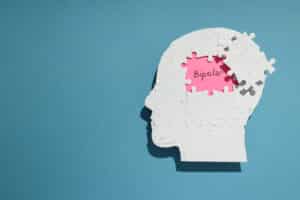Did you know that over sixteen million Americans are affected by intermittent explosive disorder or IED? Despite the prevalence of the condition, much of the population remains unaware of the symptoms and treatment options surrounding it.
If you or your loved ones have noticed unexpected bursts of anger from someone you know, then you might be dealing with IED. But how do you distinguish this condition from plain old emotion?
Simple: by reading this beginner’s guide to IED. In it, we’ll explain everything you need to know about this disorder. That way, you can have a better understanding of where this anger may be coming from. Let’s get started!
What Is IED Disorder?
Intermittent explosive disorder is a type of behavioral disorder that’s characterized by sudden angry outbursts. These outbursts can range from yelling and shouting, to aggression and violence.
Everyone loses their temper now and then. However, this occasional outburst is different from intermittent explosive disorder. IED episodes happen a lot more often than the average angry outburst.
They’re often blown out of proportion, or completely irrational. To get a better understanding of the IED, let’s look at its signs, causes, and classification.
Signs and Symptoms
There are two ways you can identify IED: through behaviors and symptoms. Many different angry behaviors can indicate the onset of intermittent explosive disorder.
However, some of the common ones include yelling during arguments, throwing temper tantrums, and threats.
For example, we all might experience road rage now and then during traffic. However, someone suffering from IED might scream, drive dangerously, or get out of their vehicle to express their rage.
The behavioral signs are also characterized by violence. Punching walls, breaking plates, and destroying property are some popular methods of displaying it.
Slapping, shoving, punching in domestic disputes or brawls with others are also common. These short-lived behaviors are typically accompanied by physical symptoms. These include:
- Energy increase from adrenaline
- Tremors
- Headaches
- Tightness in the chest
- Tense muscles
- Tingling
- Heart palpitations
What Causes IED?
There is no clear sign of what exactly causes intermittent explosive disorder. However, like many other disorders, it’s likely caused by a combination of environmental and genetic factors.
Genetic factors refer to the genes that were passed to the child from their parents. Environmental factors refer to the behaviors and experiences they were exposed to when they were young.
Many researchers believe one of the main causes of IED is low serotonin levels in the brain chemistry. However, it’s also much more likely to appear in men under the age of forty who grew up in traumatic living situations.
In addition, people with IED typically also have another mental disorder of some kind. Often, this is another condition that deals with impulsive behavior that’s deemed problematic, like antisocial personality disorder and borderline personality disorder.
Is IED a Mental Illness?
Since IED is classified in the Diagnostic and Statistical Manual of Mental Disorders, it should be considered a type of mental illness. Specifically, it’s categorized under the ‘Disruptive, Impulse-Control, and Conduct Disorders’ section.
This is due to the effect that the condition has on the brain and the behavior caused by it. Notably, the lack of serotonin causes outbursts of aggression and anger.
How Is IED Treated?
There are three main ways that IED can be treated: therapy, medication, and alternative treatment methods. In this section, we’ll briefly discuss all three of these options.
Therapy
Generally, it’s agreed that the most effective type of therapy for treating IED is cognitive-behavioral therapy. Indeed, a 2008 study found that participants were able to lower their symptoms after just twelve weeks of therapy.
Cognitive-behavioral therapy helps participants identify harmful triggers that cause their aggression. They then learn coping skills and relaxation techniques to calm themselves when these triggers appear in their everyday life.
However, keep in mind that depending on the nature of the disorder some professionals might recommend a variety of different therapies, in addition to CBT.
Medication
There is no one type of medication used to treat IED. However, depending on the severity, a medical professional might decide that it’s the best course of action.
Typically this involves finding the right combination of antianxiety, antidepressants, mood stabilizers, and antipsychotic drugs. However, keep in mind that not everyone responds well to medication.
As such, this might not be a viable treatment for some people.
Alternative Treatments
In addition to therapy and medication, there are also alternative treatments you can pursue. These typically relate to major lifestyle changes that can help manage the condition.
While there isn’t much research on the effectiveness of these lifestyle changes, there is plenty of anecdotal evidence. Often it involves simple things, like eating well, getting enough sleep, and staying physically active.
It can also involve cutting out drugs and alcohol for your life. Many people also find that mindfulness practices like meditation can help relax the body when triggers are present. Others have found success in acupuncture, massage, and acupressure treatments.
Contact SoCal Sunrise Mental Health Today
We hope this beginner’s guide to IED helped you learn more about the disorder and the various treatment options. As you can see, the best place to start is a medical center that offers cognitive behavioral therapy services.
Unfortunately, finding one that has the best interests of the patients in mind isn’t always easy. So, how do you find one that you can trust?
If you live in Southern California, then look no further than Sunrise Recovery Center. We believe there isn’t a one-size-fits-all option when it comes to mental health treatment.
That’s why we customize each treatment to the patient by addressing the underlying causes of the condition, instead of just the symptoms. If you’re interested in learning more about our program, then make sure to get in touch with us today.







